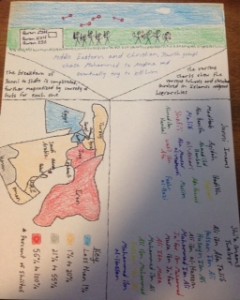Rethinking Contemporary Islam
This has been far and away the most impactful piece I have read this semester. My knowledge of Islamic culture and faith was limited to new reports and fictional literature, which I now realize may have been worse than having no knowledge at all. Three things that stood out to me and provided context throughout the future discussions I learned from this reading. The first was the context of the versus that discuss Muslim actions towards muslims and non-muslims. Muhammad was suffering under the persecution of Middle Eastern Jews and Christians and thus would likely have been speaking out of the necessity of his own safety. The differences in Sunni and Shia was the second piece of information I collected from the readings and discussion. I found it very interesting when juxtaposed to different Christian sects. The differences in Islam come from the descendants of their most esteemed prophet, while in Christianity these differences arise as a result of specific biblical interpretation. And can essentially be attributed to the verse Matthew 16:18, in which both Catholics and Protestants reference in support or denial of a singular head of church. The final lesson I take into account when contextualizing prior discussions is the hierarchy of Islamic leaders and the plethora of diverse interpretations that range from state to state, school to school, and religious leader to religious leader. This has specifically helped me in dialogue on contemporary literature which requires an underlying understanding of Islamic culture. My first discussion was with Professor Ali in which I was directly able to discuss these three elements I drew from the article. Doing this allowed me to further generalize each point and broaden the scope through which I could apply it. My picture is a combination of the three settings integrated into one to provide a tangible reminder of what I need to be aware of when reading contemporary texts.
